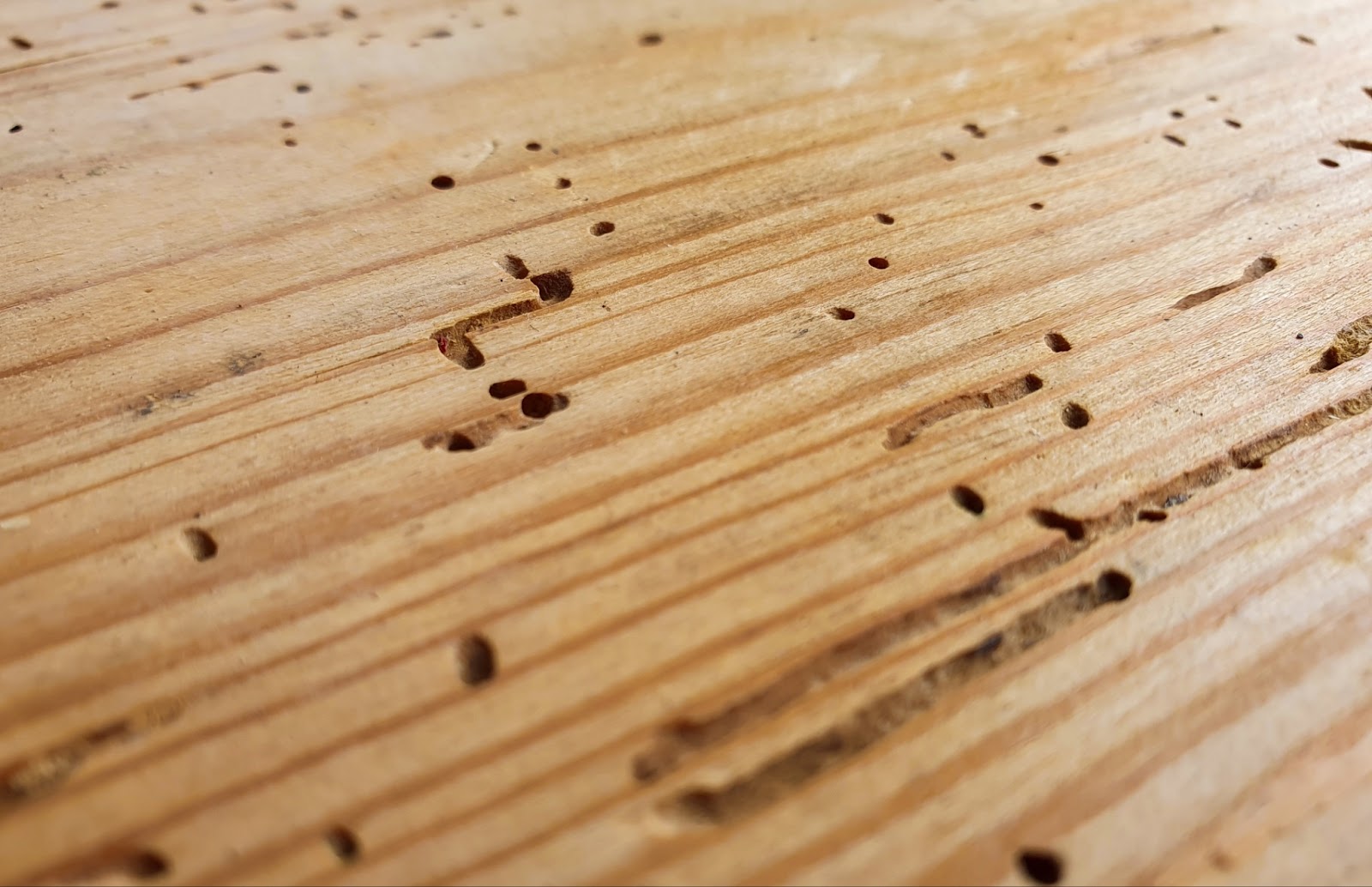Termite inspection typically involves the use of standard tools like a flashlight, screwdriver, and bump cap to examine accessible areas of a property. These basic tools help inspectors check for visible signs of termite activity, such as mud tubes, damaged wood, and termite droppings. However, when there is a strong suspicion of an infestation in concealed spaces, such as behind walls or under floors, specialised tools can be invaluable. These advanced tools allow inspectors to explore further and investigate hidden areas that are not accessible with standard equipment. They help in detecting termite activity that might otherwise go unnoticed, ensuring a more thorough inspection. By using these specialised tools, termite control services can provide a comprehensive evaluation of the property, identifying and addressing infestations more effectively.

Borescopes
Borescopes are fibre-optic probes designed for visual inspection through a small drill hole, typically ranging from ¼ to ½ inch in diameter. These devices enable inspectors to peer into concealed areas and view termite tubes, galleries, and carton nests inside wall voids and other hidden spaces. Borescopes provide a valuable way to detect termite activity that might not be visible on the surface. However, their effectiveness can be limited by the presence of insulation within walls, which can obstruct the view. Additionally, conducting a comprehensive inspection with a borescope often requires drilling multiple holes throughout the structure, which can be time-consuming and may not always be feasible. Despite these limitations, borescopes remain a useful tool for thorough termite inspections, particularly in cases where there are strong suspicions of hidden infestations.
Moisture Metre
A moisture metre helps detect areas of high moisture, which are often associated with termites and other wood-infesting pests. These metres can be used on joists, sills, rafters, and other wood or materials. There are two types: pin metres, which are inserted into the wood, and non-invasive metres that measure moisture without making pinholes. Some advanced metres offer both functionalities.
- Usage: Take readings every few feet in suspect areas.
- Interpretation: Homes without moisture issues typically have moisture levels between 5% and 10% in heated areas, and 12% to 19% in unheated areas and crawl spaces. Moisture levels above 20% indicate a potential problem, warranting further investigation.
Other High-Tech Equipment

In addition to traditional inspection tools, there is a range of advanced detection equipment available to enhance the accuracy and thoroughness of termite inspections. This high-tech equipment includes:
- Sound Equipment: This category ranges from inexpensive stethoscopes to highly sophisticated sound amplification systems similar to those used by security firms. These devices can detect the faint sounds of termites chewing on wood and moving within the structure, helping inspectors identify active infestations that may not be visible on the surface.
- Methane Detectors: Termites produce methane as a byproduct of their digestion process. Methane detectors are specialised devices that can sense this gas, thereby indicating the presence of termite activity. These detectors can be particularly useful in locating hidden colonies within a building.
- Microwave Sensing Devices: These devices use microwave technology to penetrate walls and other structures, allowing inspectors to detect the movement and presence of termites inside. Microwave sensing devices can provide a non-invasive way to identify infestations in areas that are difficult to access with traditional inspection methods.
Termite-Detection Dogs
Termite-detection dogs have been used for decades, though they haven’t become widespread in the pest control industry due to costs and complications related to handling and transporting the dogs. When properly managed, these dogs can quickly identify termites in inaccessible areas where human inspectors cannot reach. However, they are not infallible and can miss termites or produce false positives.
The Reasons We Conduct Termite Inspections

Conducting a termite inspection requires trained professionals who are dedicated to the task. The primary goals of a termite inspection are to identify whether termites or other wood-destroying pests are present in a structure and to develop a treatment plan if an infestation is detected. Effective termite inspections are a crucial part of termites control services, ensuring that infestations are accurately identified and appropriately managed to protect the integrity of the structure.
Real Estate Inspections
Termite inspections are often requested during real estate transactions. A formal written report may be required to confirm that a property is free of termites and other wood-destroying pests before a sale. This is important for both the buyer and the lending institution, as undetected termites can cause significant structural damage over time.
- Income Generator: Real estate inspection fees are a major source of income for pest control companies.
Treatment Plan/ Proposal
Inspections are also conducted to create a treatment plan and provide estimates when termites are suspected. The inspector will measure and graph the structure, identify construction elements and potential trouble spots, determine the appropriate termite control methods, and calculate the necessary materials and equipment. The accuracy of the inspection directly impacts the success of the treatment and the company’s ability to secure the job and make a profit.
Reinspection
Annual reinspections are a standard component of many termite warranty renewal contracts. Periodic inspections are essential for both ethical business practices and effective pest control. These reinspections are particularly crucial in termite monitoring and bait programs, where there is no chemical barrier around the structure. Annual inspections help ensure that termites have not bypassed the monitors and attacked the structure. Regular reinspections are vital for termites control in Singapore, where the climate and environmental conditions can make properties particularly susceptible to termite infestations.
By incorporating these tools and understanding the various reasons for conducting termite inspections, pest control professionals can effectively identify and manage termite infestations, ensuring the safety and integrity of the structures they inspect. This approach is particularly important for termite control in Singapore, where the warm and humid climate creates an ideal environment for termites to thrive. For more information and inquiry regarding pest control call at +(65) 9355 0123 or email at enquiry@ipest.sg.
 Tasselline | Latest Articles By Singaporeans, for Singaporeans Article Site for Singaporeans
Tasselline | Latest Articles By Singaporeans, for Singaporeans Article Site for Singaporeans